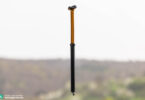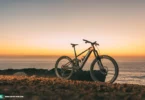E-mountain bikes are on fire right now, with this year seeing more models and more choice than ever before. We’re pitting four entry-level models, each costing 3,299 € to 3,499 €, against each other for this issue’s group test. So just what sort of performance can we expect to get for this – and let’s be honest – still pretty hefty price tag? And what are features we should be looking out for as we make a purchase?
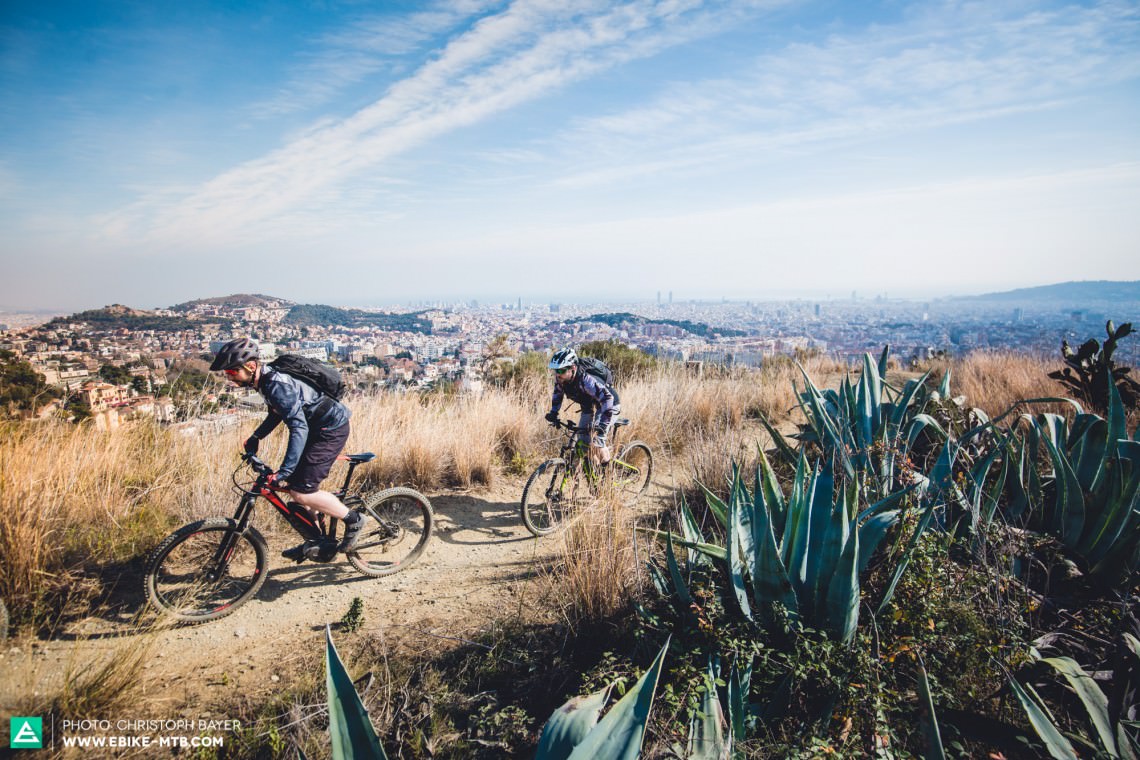
If there’s one thing in life that merits a bit of our hard-earned dollars, then it’s money spent towards our free time, right? And isn’t that when we do the majority of our e-mountain biking? But before you rush off to the nearest bike shop to splash your cash on any random brand-new model, take a moment to assess what you’re really after. After all, even the most affordable entry-level fullys, which start from 3,299 €, are still a long way off the term ‘cheap.’
[emaillocker id=”11001″]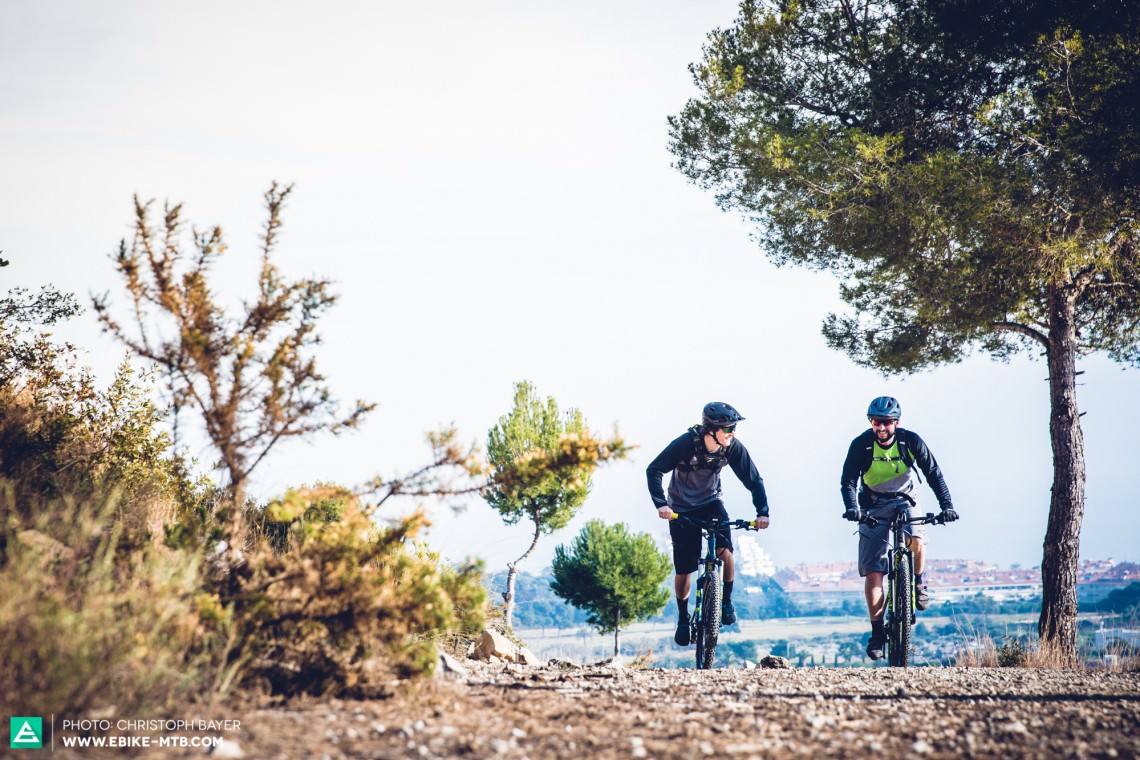
Once you’ve pinpointed your capabilities, expectations (Where do you primarily ride? How hardcore does the bike need to be?), and needs, then you’ll be in a far better position to choose an appropriate model. Interestingly, our readers’ survey revealed that 80% of you primarily head out for E-MTB rides on flowing single track and forest trails. The remaining fifth are the minority who seek out tricky, technical trails. So while it’s pretty clear that there are two definite strands to riders’ needs, it appears that the bikes are still the same. However, it’s worth mentioning that an E-MTB that cuts a fine figure on the trails is the same sort of bike that tends to serve equally as well on long, leisurely rides too. But does this hold for the flipside? In fact, a decent touring bike might not cut the biscuit on more challenging trails.
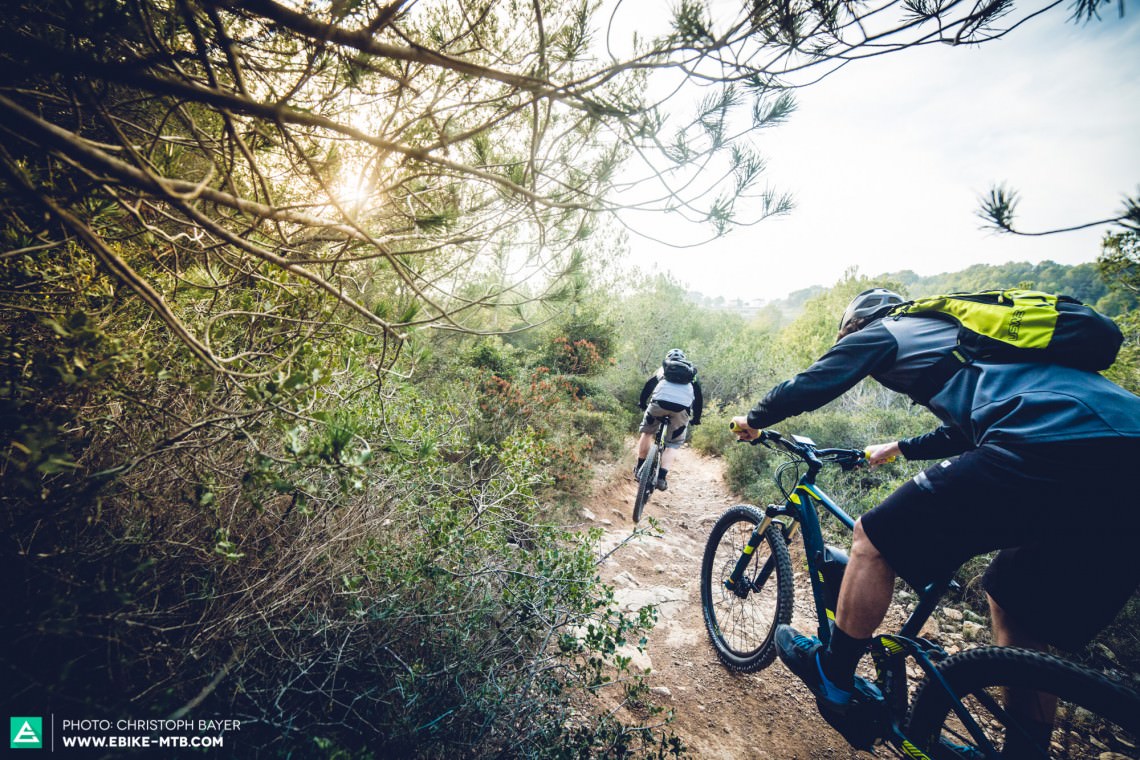
All Bikes Tested:
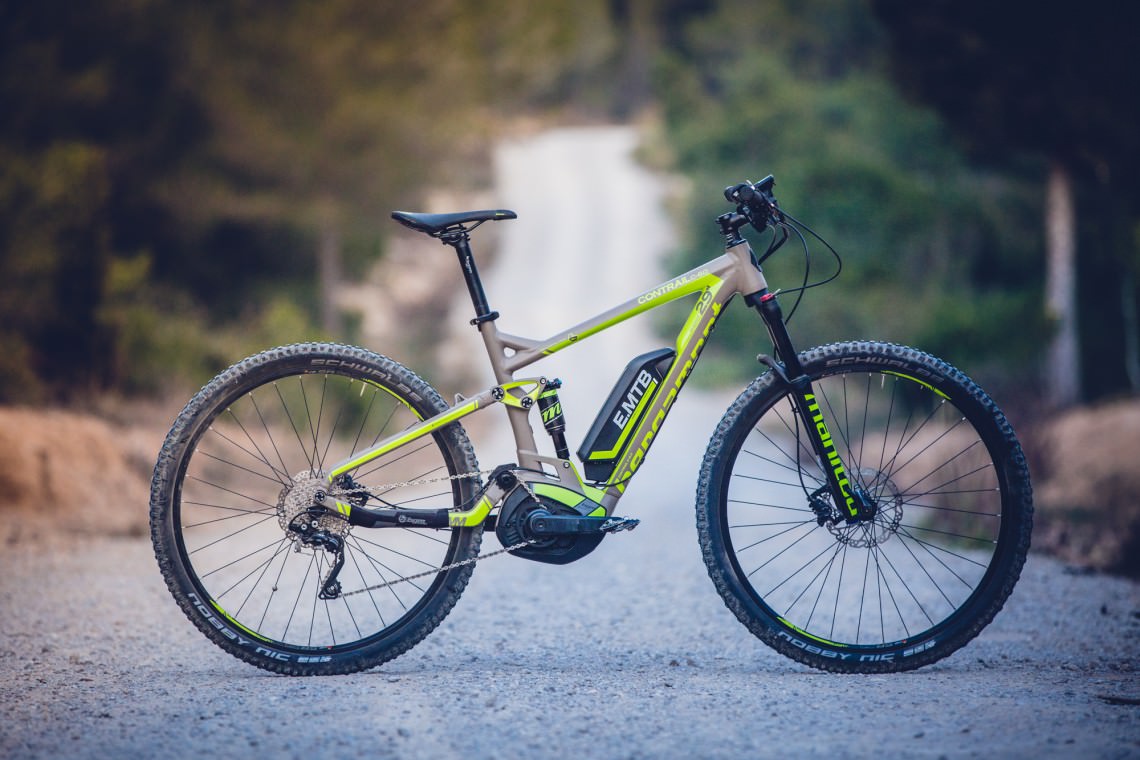
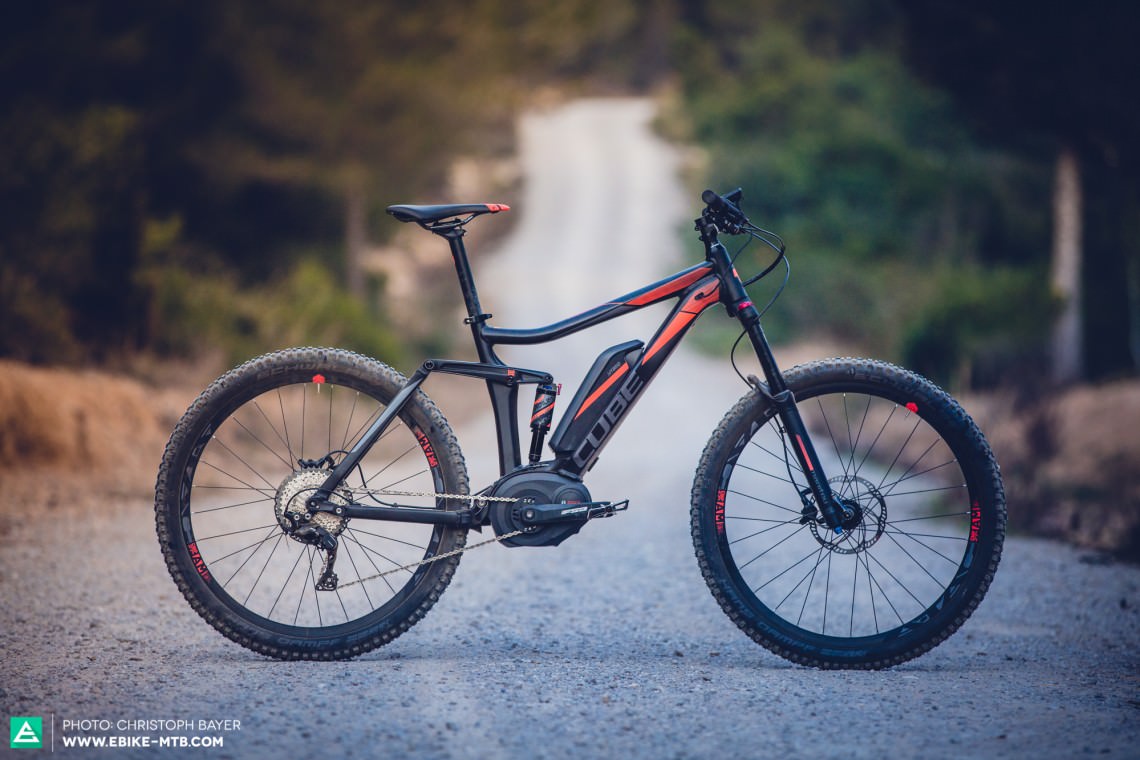
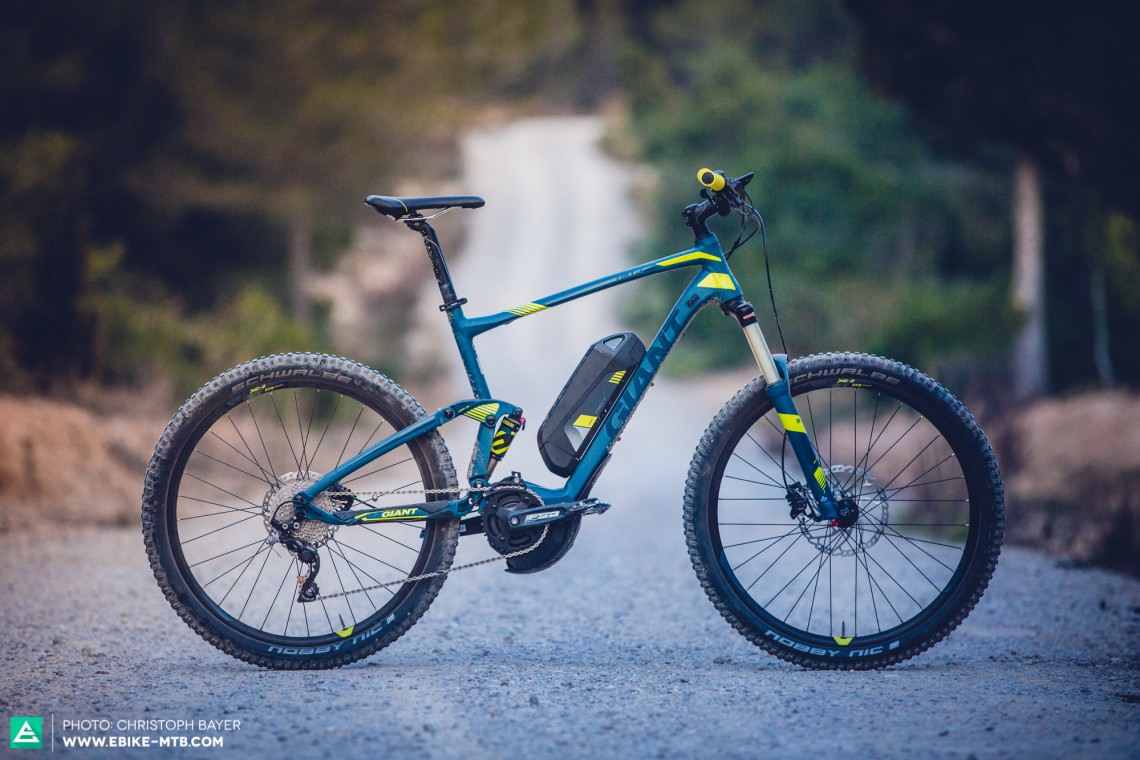
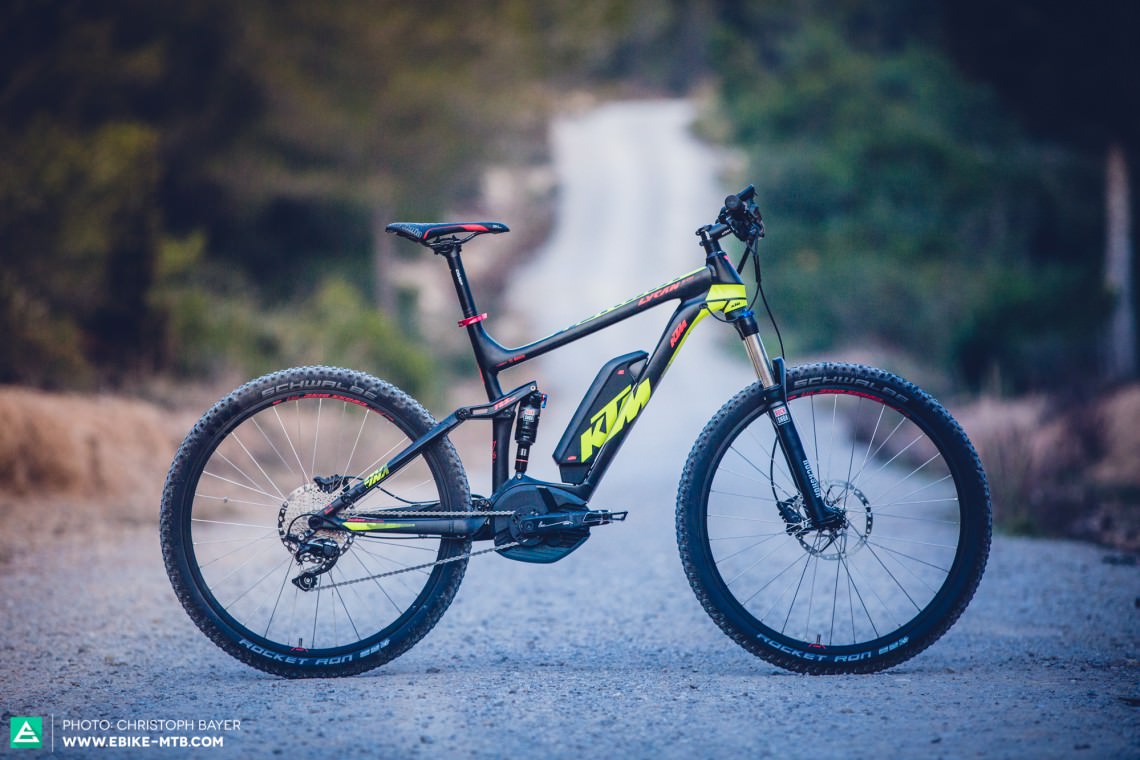
In this group test we only highlighted one model that could really hold its own on technical single track – but there’ll be more on that later.
| Bike | Travel | Weight | Price |
|---|---|---|---|
| Bergamont E-Line Contrail C 6.0 | 120/120 mm | 21.48 kg | € 3,499 |
| Cube Stereo Hybrid 140 HPA Pro | 140/140 mm | 22.01 kg | € 3,499 |
| Giant Full-E+2 | 140/127 mm | 21.74 kg | € 3,299 |
| KTM Macina Lycan 27.5 10 CX4 10S SLX | 120/125 mm | 21.23 kg | € 3,399 |
Put bluntly, an E-MTB can be split into three main parts: the frame, the motor, and its stock components. So here’s our run-down.
The motor: a question of Bosch versus Yamaha
While three of the test bikes featured a new Bosch CX motor, the Giant Full-E+ was kitted out with a Yamaha motor that’s now two years old. The Yamaha SyncDrive model does have an 80 Nm max torque, but it felt significantly more sluggish and far less lively than the Bosch motor with just 75 Nm maximum torque.
The reason for this goes back to the shorter lag before the motor kicks in, and its generosity to dish up some power. The difference is evident on the trails – and it doesn’t take lab stats to prove this. In this price segment you’re unable to get your hands on a bike with a Brose motor. All of the models in this group test featured a battery capacity of around 400 Wh, although Bergamont and CUBE offer a 200 € upgrade option to get a 500 Wh battery. It’s a worthy investment too: the bigger the capacity, the farther you can ride and the more fun you can have. Upgrading at a later date would incur more substantial charges, as you’d most likely have to get a brand-new battery. While both the Bergamont and KTM allow you to charge the battery on the bike, the CUBE and Giant models require you to remove it from the bike before charging.
The frame – the pride and joy
The pride and joy of any bike is its frame, defining not only the bike’s aesthetic, but also the riding position and how the bike handles. Our test fleet threw up a flurry of differences here, with the CUBE, KTM, and Giant rolling on 27.5″ wheels and the Bergamont utilizing 29ers with the objective of lending the bike more smoothness and stability.
On paper, the suspension on the bikes only varies slightly – but their performances made it pretty clear that the discrepancies are much greater in real life, and this is largely due to the third element, the components. In the individual test reviews you’ll get a more detailed report on how each bike rode.
The components – the deciders
Sad, but true: the cheaper end of the E-MTB spectrum often features components that make a decisive difference in how the bike performs – regardless of whether it’s got an XT or an SLX transmission. The prerequisites are good suspension, grippy tyres, and a well thought-out cockpit. These are the bonds between the rider and the bike, and the bike and the ground, so they’re primarily responsible for control and stability. Head to our website to scour our three-part buyers’ guide which outlines exactly what to consider when buying an E-MTB.
To glean the optimal riding experience, it’s all about the interplay of these three main elements: frame, motor, and components – all in the right context for that specific bike.
Tops:
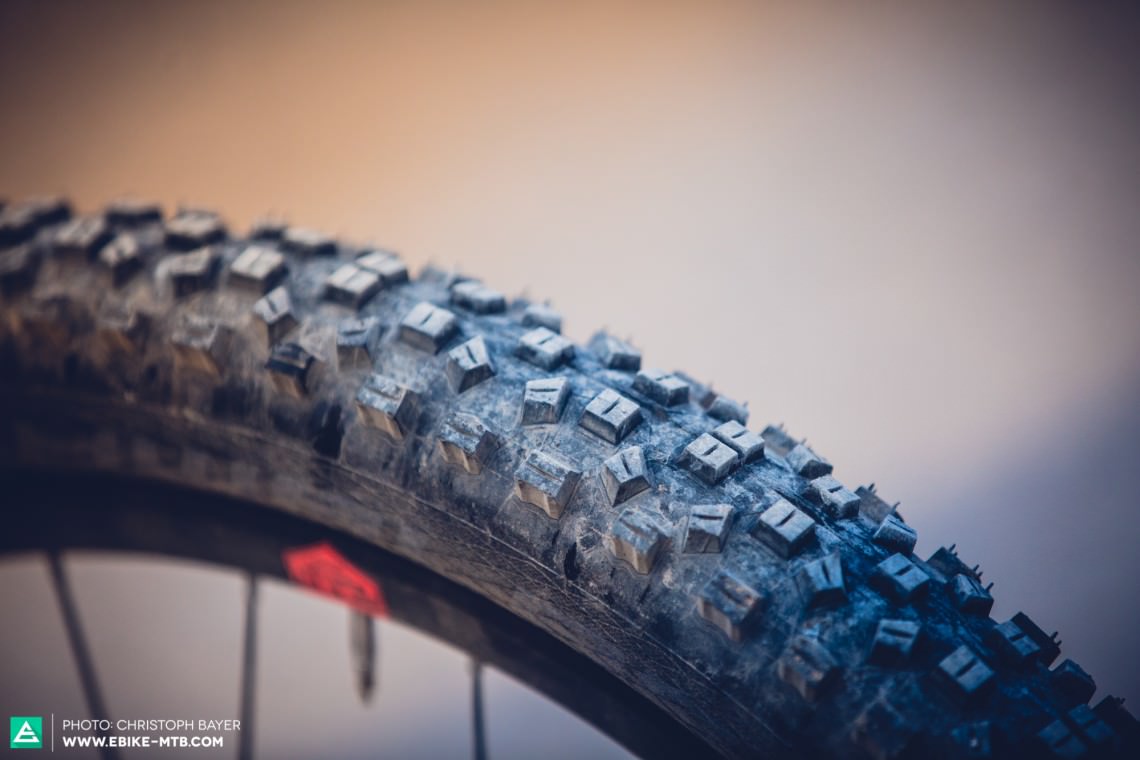
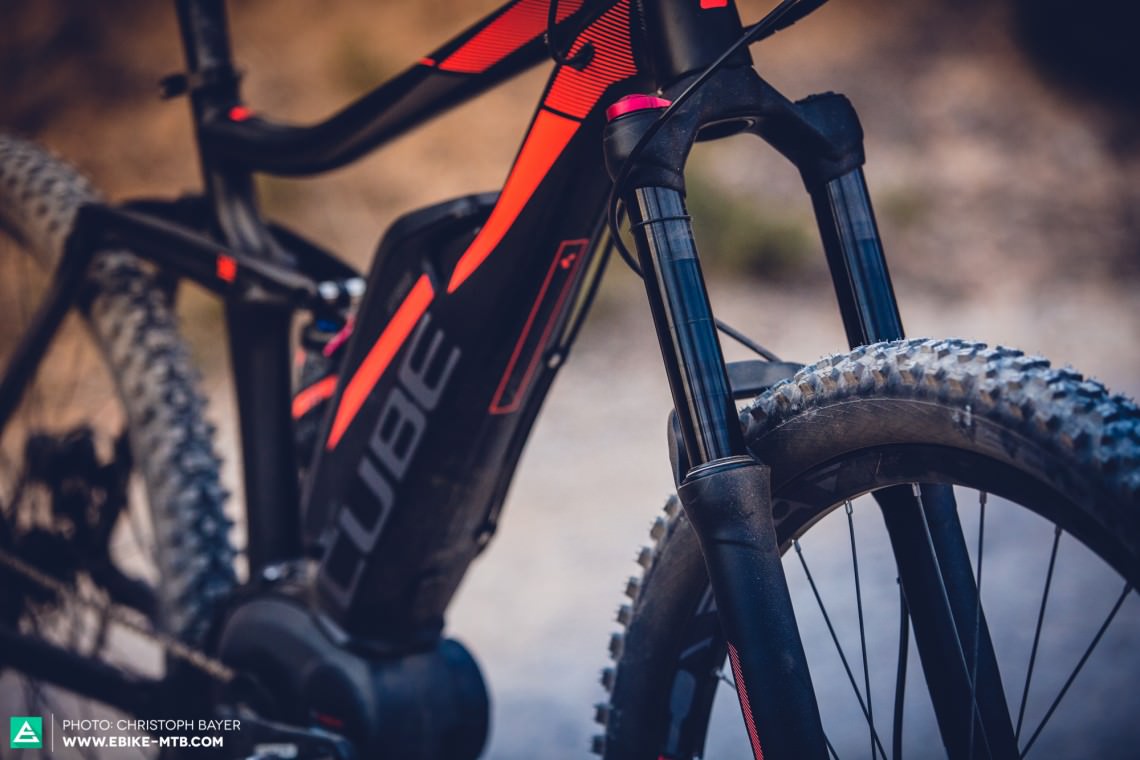
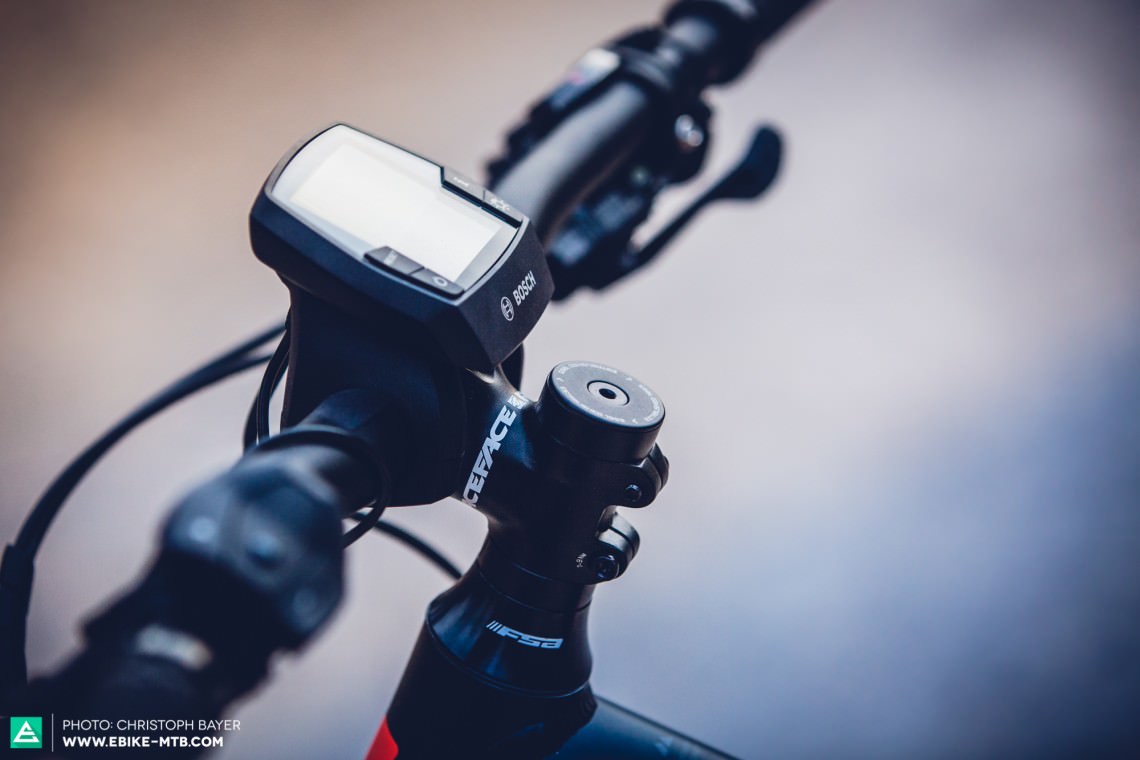
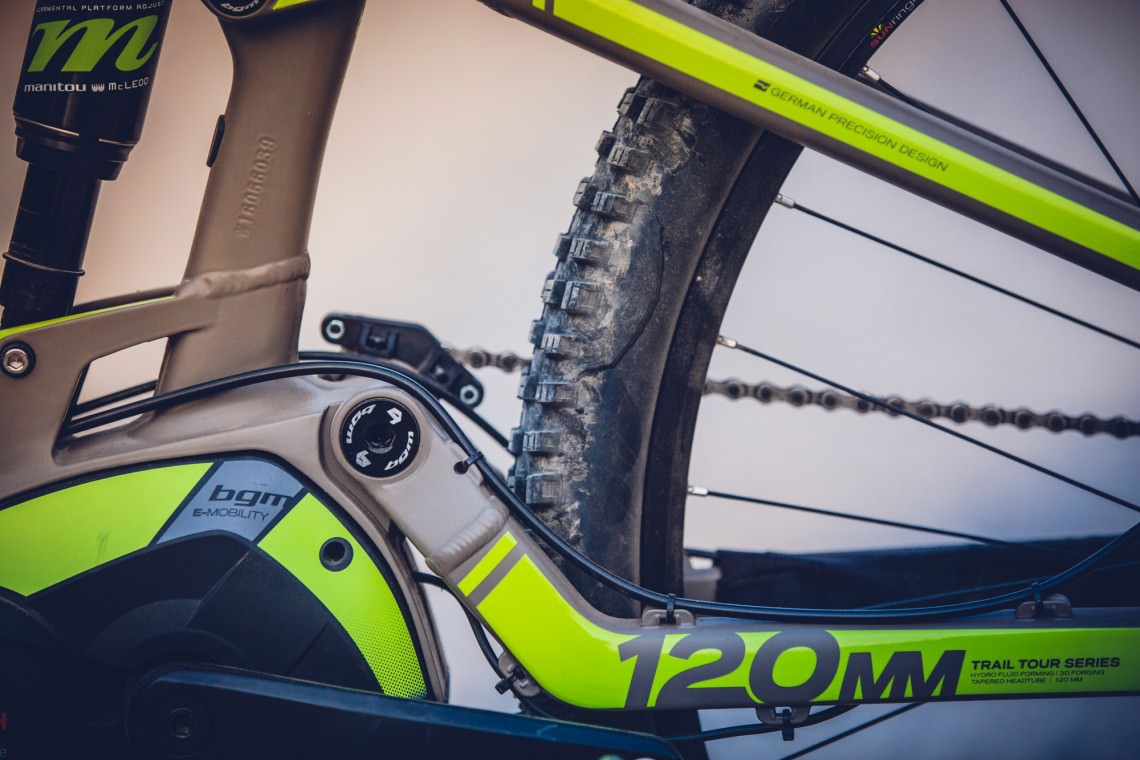
Flops:
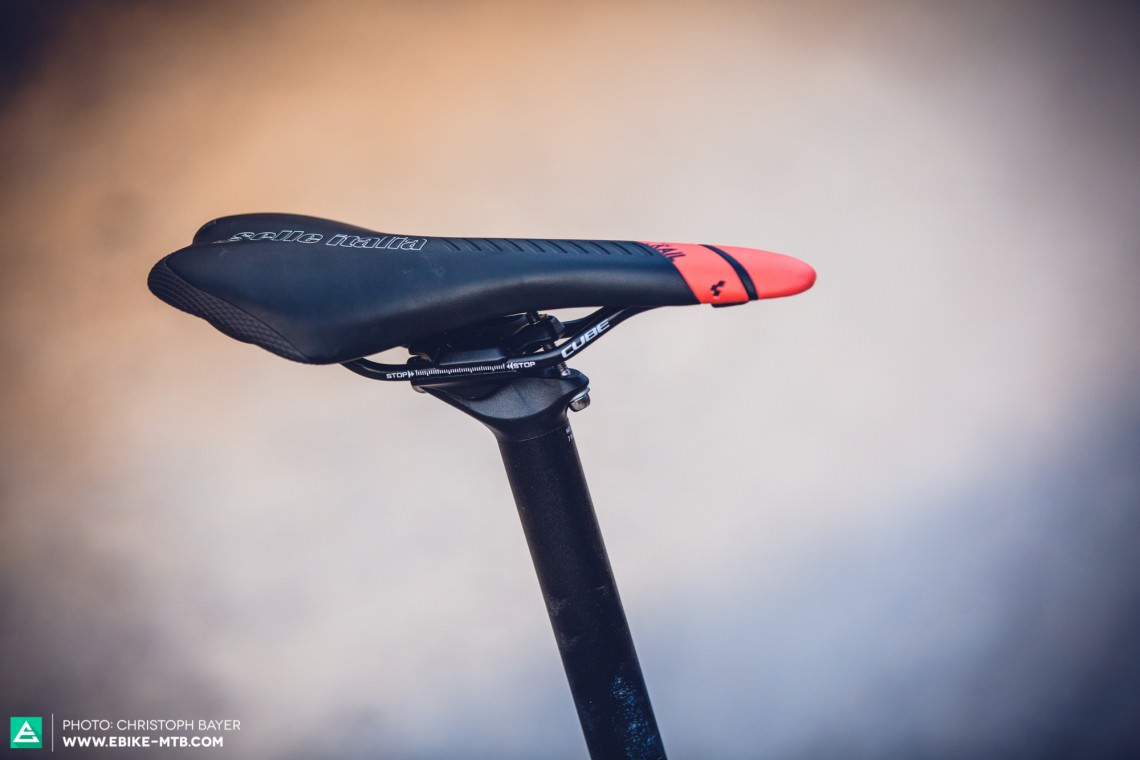
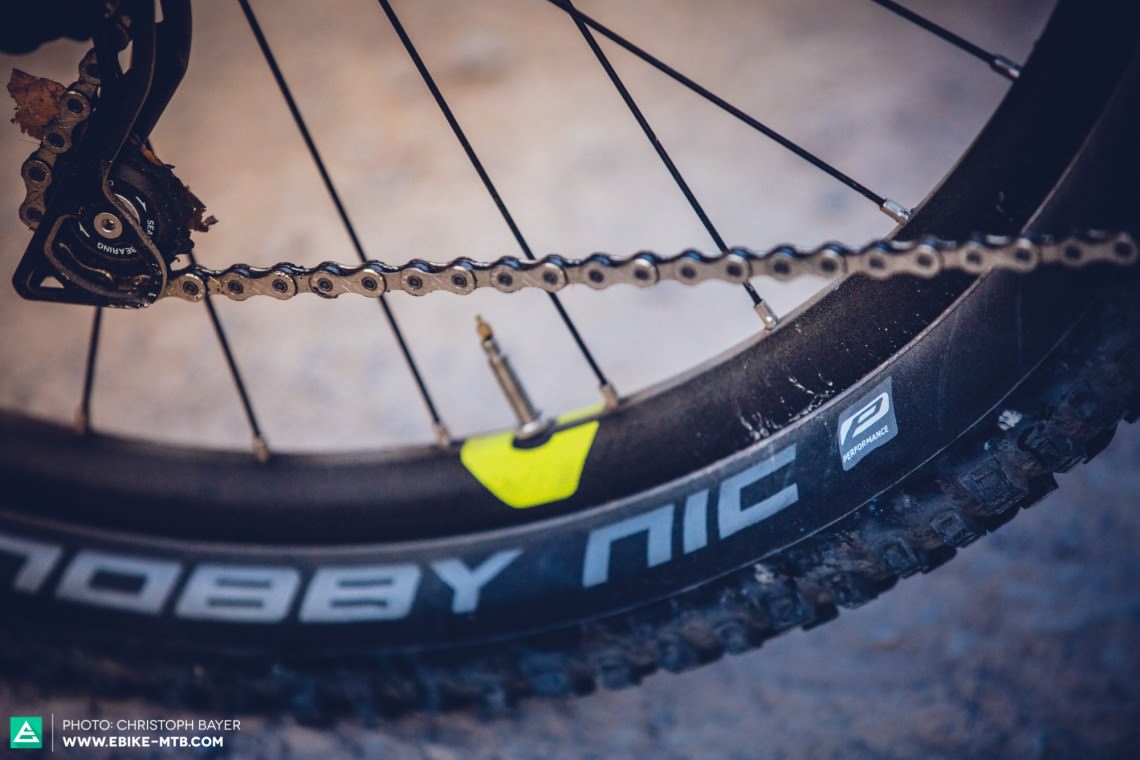
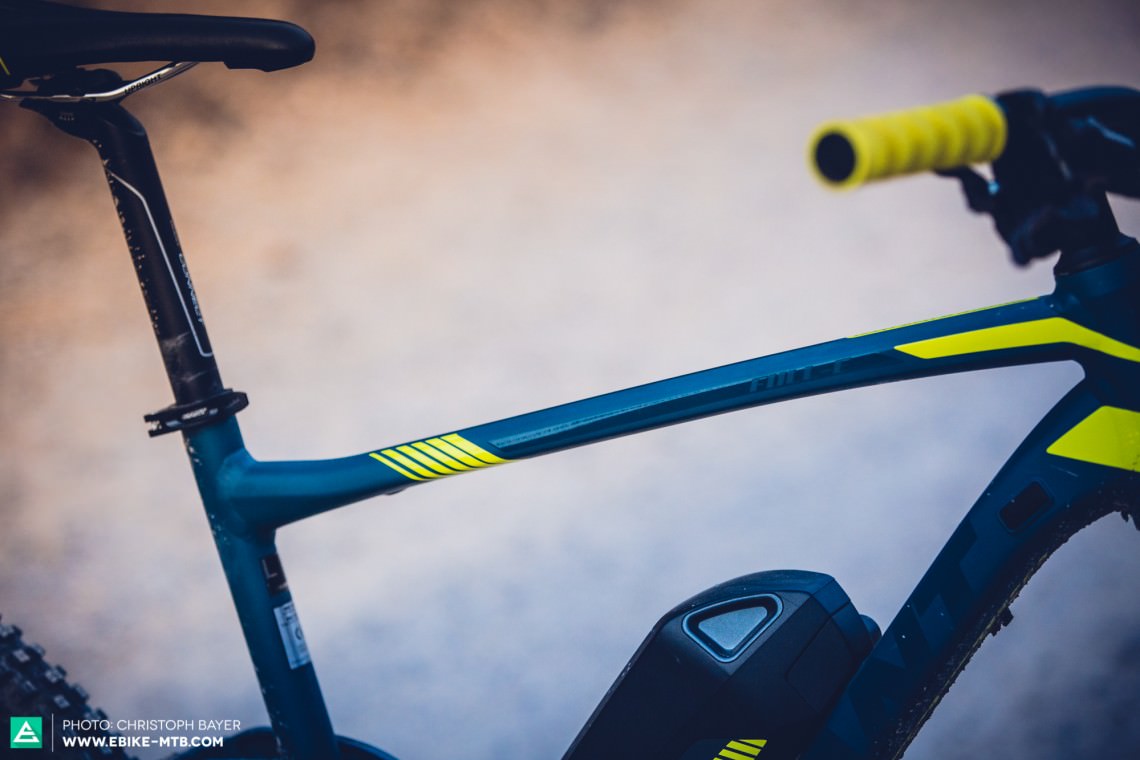
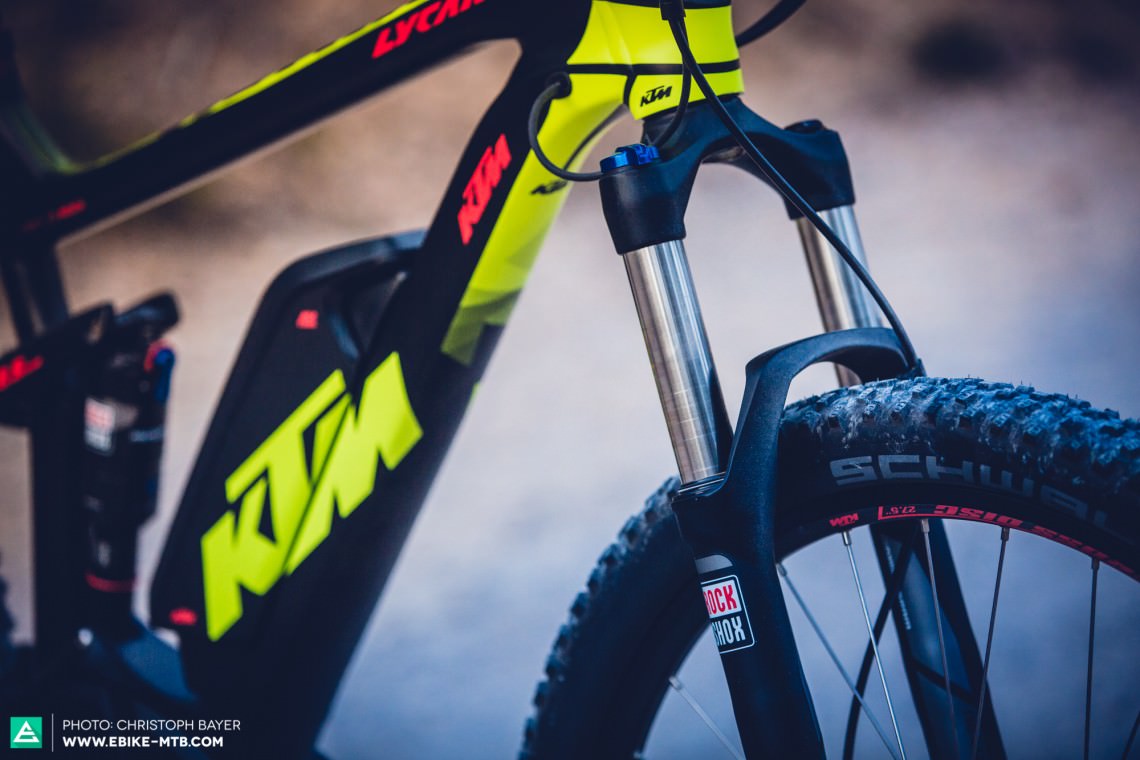

Conclusion: The best bike for under 3,499 €
So which is the best bike out of the four? After days of test riding on the outskirts of Barcelona, the result was obvious. Both the Giant Full-E+ 2 and the Bergamont E-Line Contrail 6.0 have pooled their eggs into the comfort basket, making them ideal for long rides. The KTM MACINA Lycan 27.5 10 CX4 10S SLX won us over with shedloads of agility. However, each of these three bikes had flaws in their spec to varying extents, limiting their capacity on the trails.
There was only one bike that showed its prowess on technical trails and delivered a fun ride – namely the CUBE Stereo Hybrid 140 HPA Pro. With a considered selection of robust and reliable parts, the Stereo serves as the best entry-level bike into the world of E-MTB fullys, and is therefore fully deserving of the test win and our buyers’ tip.
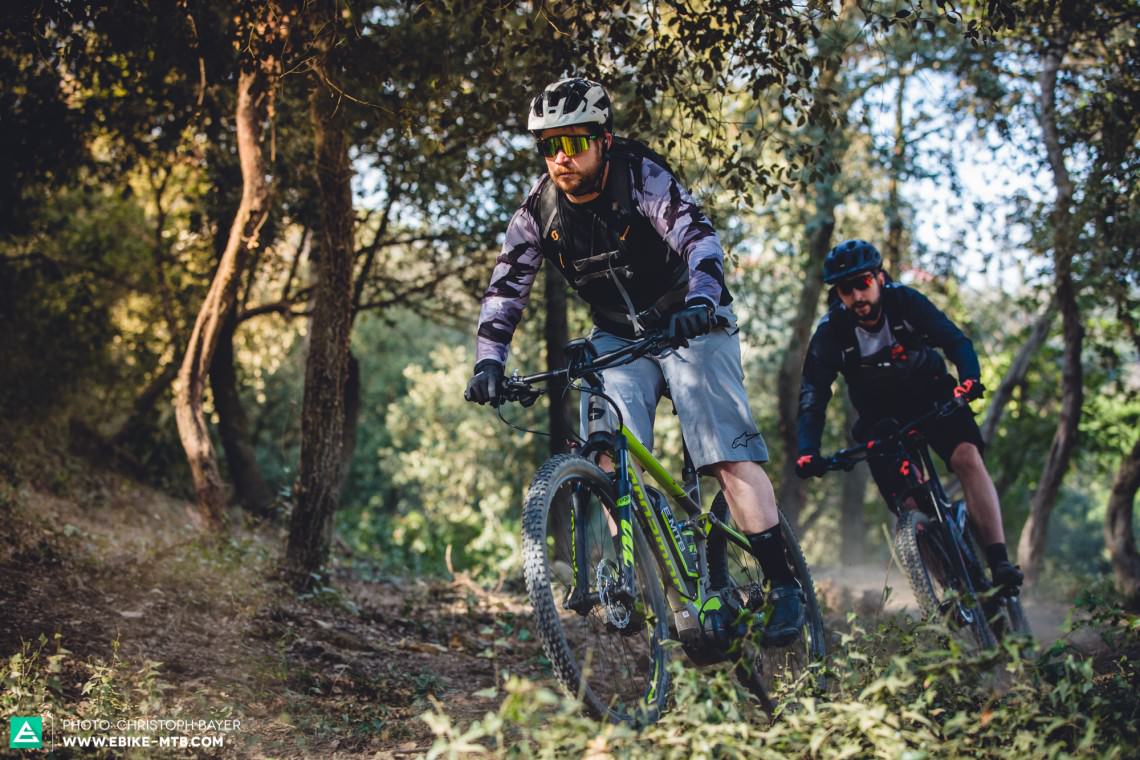
Read all reviews from this group test here: Bergamont E-Line Contrail 6.0 400 | CUBE Stereo Hybrid 140 Pro | Giant Full-E+ 2 | KTM MACINA Lycan 27.5 10 CX4 10S SLX
Text und Bilder: Christoph Bayer
Did you enjoy this article? If so, we would be stoked if you decide to support us with a monthly contribution. By becoming a supporter of E-MOUNTAINBIKE, you will help secure a sustainable future for high-quality cycling journalism. Click here to learn more.






